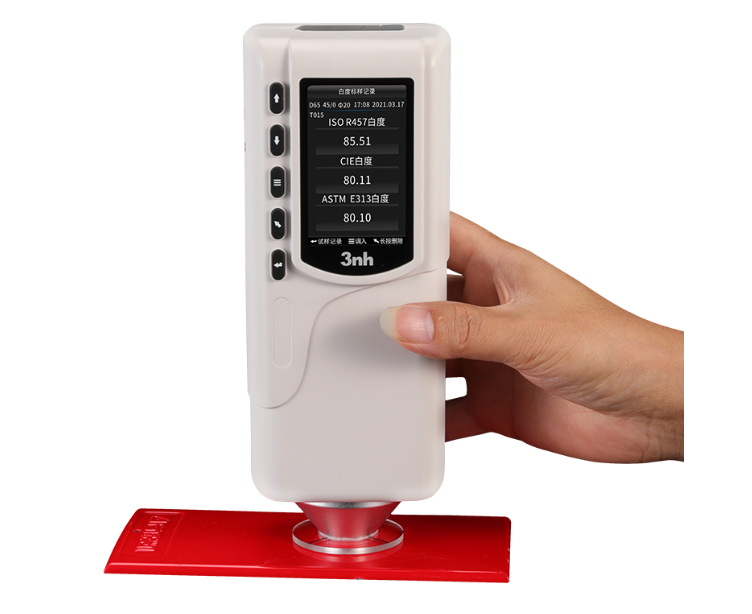Titanium dioxide (TiO₂) is celebrated for its superior whiteness and hiding power, qualities that make it a key ingredient in industries like paints, coatings, and cosmetics. Accurate testing of these properties ensures product consistency, quality, and performance. This article delves into the methods, standards, and equipment used for measuring titanium dioxide's whiteness and hiding power.
Whiteness and hiding power are key properties of titanium dioxide that directly impact its functionality in a variety of applications. Whiteness determines the brightness and aesthetics of the product, while hiding power ensures effective light scattering for opacity and coverage. These attributes help manufacturers maintain quality and meet industry standards.

The Importance of Titanium Dioxide
Titanium dioxide (TiO₂) is known as the "teeth of industry" due to its excellent optical properties, high refractive index and strong hiding power. It is an indispensable core raw material in industries such as coatings, plastics, papermaking and cosmetics. It can significantly improve the whiteness, gloss and weather resistance of products, cover the color of the substrate by efficiently scattering visible light, and performs well in anti-ultraviolet, preventing photoaging and enhancing product durability. It not only meets functional requirements, but also significantly improves products. appearance quality and economic value.

Titanium dioxide whiteness detection method
The particle size of titanium dioxide is usually 200~300nm, which is the optimal light scattering size in the visible light wavelength range, allowing titanium dioxide to efficiently reflect most of the visible light, thus appearing pure white.
To detect the whiteness of titanium dioxide, you can use a 3nh spectrophotometer or whiteness meter to measure the following colorimetric indicators to analyze whether titanium dioxide meets standards and requirements:
Lab color space: A colorimetric system that quantifies brightness and color dimensions.
Yellowness Index (YI): Evaluates the deviation from pure white due to impurities or discoloration.
Whiteness Index (WI): Measures overall brightness relative to a standard white reference.


Testing method for Hiding Power of Titanium Dioxide
Hiding power refers to the ability of a coating to cover the color or pattern of a substrate, that is, the minimum thickness of the coating required to make the substrate completely invisible. High hiding power means that the coating can achieve good coverage with thinner coatings, thereby improving construction efficiency and reducing material costs. Hiding power is directly related to the light scattering and absorption characteristics in the coating. Generally speaking, the higher the refractive index of the pigment, the stronger its hiding power. Titanium dioxide (TiO₂) has become the most widely used white pigment in coatings due to its extremely high refractive index (2.7, much higher than many other pigments) and excellent light scattering ability.

Hiding power is usually assessed by applying the coating to a contrast card (a black and white test card) and then measuring the reflectance of the black and white areas.

The smaller the difference in reflectivity, the stronger the hiding power. We can use ASTM D 2805-11(2023) standard method for measurement:
This standard measures the hiding power of a coating on a contrast card by reflectance. It evaluates the hiding performance of a coating by comparing the reflectance of a coating applied on a black and white background. This standard is commonly used to evaluate coating performance under laboratory conditions when maximum accuracy and minimum subjectivity are required . This standard can produce results with absolute physical meaning without the need for comparison with a standard coating. It should be noted that this standard is suitable for determining the hiding power of air-dried coatings with Y tristimulus values greater than 15% .
Calculation formula:
Hiding power = (white background reflectivity - black background reflectivity) / thickness
We recommend you use the following 3nh spectrophotometer to measure reflectance or paint hiding .
1. Portable Spectrophotometer TS7700
Under the D8 geometric optical lighting conditions recommended by CIE, the Taishuang TS7700 spectrophotometer can accurately measure the SCI and SCE reflectance data of samples/fluorescent samples, and can accurately measure and express various color difference formulas and color indexes in multiple color spaces. In addition to the commonly used color space data, this powerful portable spectrophotometer can also measure chromaticity indicators including WI , YI , opacity , 8-degree gloss , etc.
2. Spectrocolorimeter CR9
As a spectrocolorimeter, CR9 combines high precision, high performance and high cost performance. The repeatability ΔE*ab can be easily controlled within 0.03. It can also measure chromaticity indicators such as WI, YI and hiding power.








 0086 18165740359
0086 18165740359

 Skype Online
Skype Online